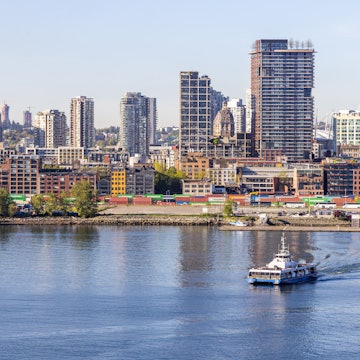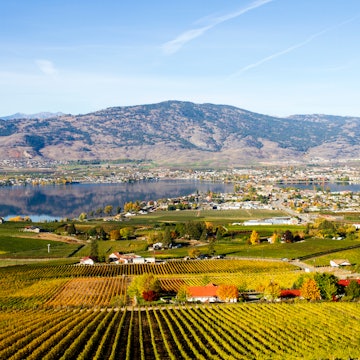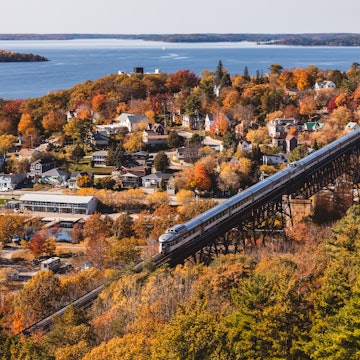
How to travel around in British Columbia, Canada's westernmost province

Jul 16, 2025 • 6 min read
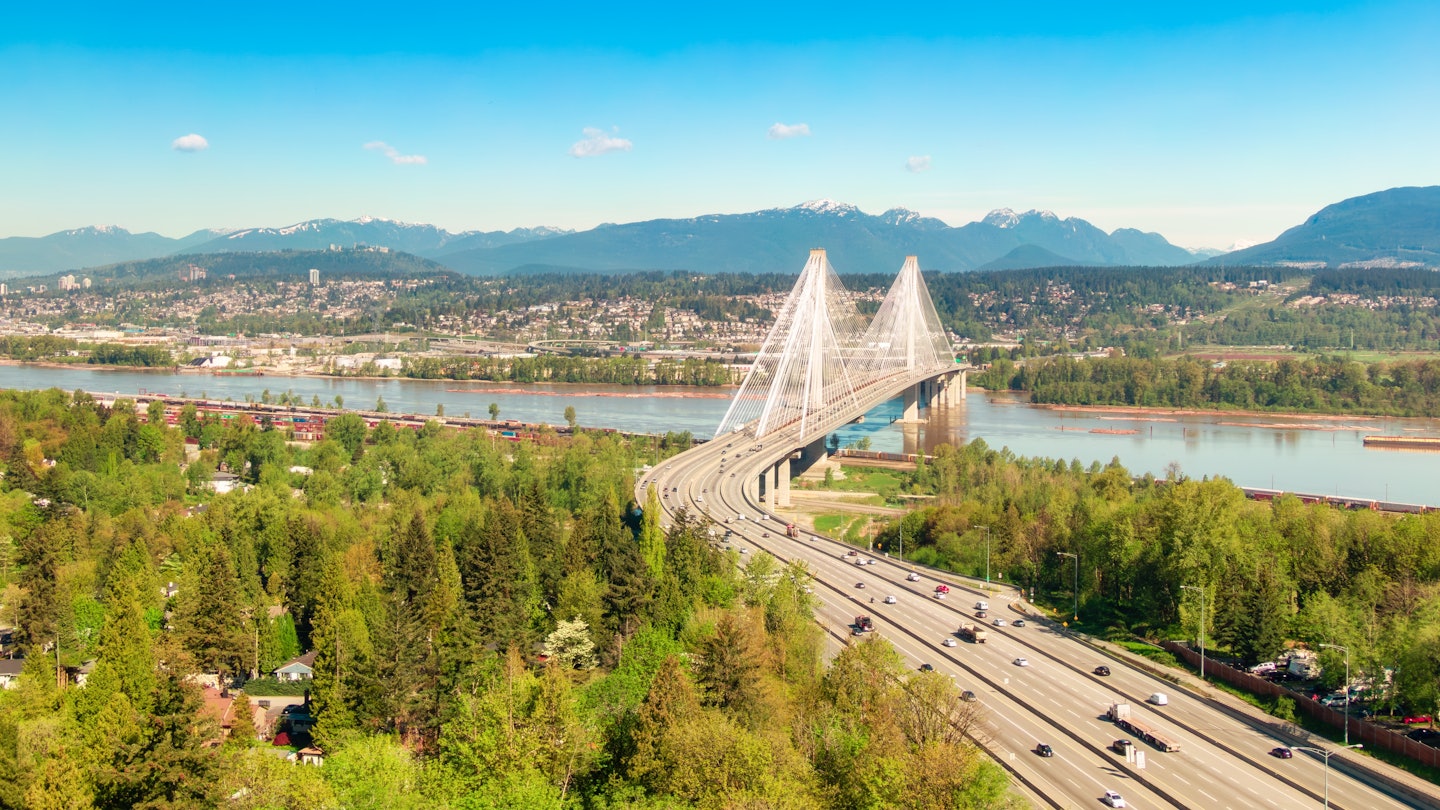
Port Mann Bridge on the Trans-Canada Highway (Hwy 1), Vancouver. EB Adventure Photography/Shutterstock
British Columbia (BC) – Canada’s fourth-largest administrative area and second-largest province (after Québec) – is four times the size of the United Kingdom and jam-packed with deep fjords, precipitous mountains and curvaceous lakes. For getting around, locals rely heavily on cars, airplanes and, on the west coast, ferries. The crux of the road network is concentrated in the southwest, most notably in the Lower Mainland area around Vancouver. The northern half of BC is mainly wilderness with scant roads and public transport. Plan your travels with our guide to the region's transportation options.

Car is the primary option by road
BC mirrors the United States in its love affair with the motor car. Outside the main metro areas, public transport lacks the scope and choice available in South America, Asia and Europe. Road quality is good: designated highways are usually well-maintained with wide shoulders. Forest and service roads are invariably unpaved and best tackled with a 4WD. With a population of only 5.6 million, BC doesn’t suffer from major traffic jams outside the Vancouver metro area.
Tip for renting a car: Prebook at Vancouver’s YVR airport with one of the eight companies based directly opposite the main terminal. Companies include Enterprise, Alamo and Hertz. Prices vary depending on region, car type, length of rental and driver’s age but start at around $78 (US$57) per day. Drivers must be over 21 years of age.
The Trans-Canada (Hwy 1) bisects the province east–west
Beyond the Trans-Canada, main roads include Hwy 3 (a more scenic “back route” across southern BC); Hwy 5 which traverses the province diagonally from Hope to Jasper (AB) and incorporates the 186km (116-mile) Coquihalla freeway; and Hwy 19 which runs north–south across Vancouver Island from Nanaimo to Port Hardy.
Internal flights on small planes cut down travel time
There are two main provincial airlines, Pacific Coastal Airlines and Central Mountain Air which, between them, serve a multitude of destinations from populous Vancouver and Victoria to tiny Massett in Haida Gwaii (population 838).
Most provincial flights emanate out of Vancouver Airport’s South Terminal (reachable by shuttle from the main terminal). Almost all flights connect through Vancouver with a few exceptions (Nanaimo–Kelowna, Victoria–Kelowna).

Floatplanes are part of BC culture
Several companies operate from water docks rather than landing strips, headed up by Harbour Air based in Richmond. Floatplanes have the benefit of delivering passengers directly into the heart of downtown Vancouver and Victoria. They also serve smaller airport-less destinations like Whistler and Salt Spring Island.
Various intercity bus companies serve most cities and large towns in BC
When once-iconic Greyhound buses were phased out in Canada in the late 2010s, various private companies took up the slack. The main route along the Trans-Canada is handled by Rider Express, which has daily services between Vancouver and Calgary calling at Salmon Arm, Revelstoke, Golden and Yoho, among other places.
Ebus handles more northerly routes heading up-province from Vancouver towards Prince George and Edmonton (AB) with stops in Kamloops, Williams Lake and Clearwater (for Wells Gray provincial park). Ebus also does a circuit around the Okanagan region.
BC Bus North covers northern BC operating out of Prince George and probing west as far as Prince Rupert and north to Fort St John. Vancouver Island is covered by IslandLink. Book places in advance. Mountain Man Mike’s tackles the Hwy 3 corridor once a week calling at Vancouver, Princeton, Osoyoos, Castlegar, Nelson, Cranbrook and Fernie.
Go by rail on the iconic Canadian train
The train trundles across BC from Vancouver via Kamloops to Jasper. The journey continues through Saskatchewan and Manitoba to Toronto. The train, operated by Crown corporation VIA Rail, runs twice a week in either direction. There are three classes: prestige, sleeper plus and economy. Prestige and sleeper plus class include meals and sleeping berths.
Tip for travelers: Bullet train this isn’t! The 731km (454-mile) journey between Vancouver and Jasper takes 19 hours.
Take the “Scenic Adventure” rail routes
VIA also runs a Jasper–Prince Rupert train as one of its "Scenic Adventure" routes. Formerly known as the “Skeena” this much-loved service rattles its way across the mountains and plateaus of northern BC calling at numerous small towns and flag-stops en route. The journey takes two days with an obligatory overnight in Prince George where you must book your own accommodation. The train runs three times a week and offers light meals on board. There are no sleeper cars.
Vancouver is the only city with a Metro rail service
Vancouver, BC’s largest city has three SkyTrain lines and one commuter line, the West Coast Express.
Tip for saving money: A day pass on the Skytrain costs $11.95 (US$8.70) for all zones and includes unlimited usage of buses and seabuses.

BC Ferries operates the largest fleet of vehicle ferries in the world
The ferries are a vital link in the BC road network and the only way of accessing Vancouver Island by car. The ferry between Horseshoe Bay, Vancouver and Departure Bay, Nanaimo is effectively part of the Trans–Canada highway.
Other important routes include the crossing between Tsawwassen (Vancouver) and Swartz Bay (Victoria), the voyage from Comox on Vancouver Island to Powell River on the Sunshine Coast, the magnificent Inside Passage route from Port Hardy via Bella Coola to Prince Rupert (with connections on to Alaska), and sailings from Prince Rupert to Skidegate and Moresby Island in Haida Gwaii. Smaller ferries serve the Sunshine Coast and the Gulf Islands.
Tip for booking ferries: Tsawwassen–Swartz Bay is the busiest crossing, and drivers should book weeks in advance in the summer months.
Vancouver and Victoria have excellent urban bike networks
The Victoria bike network stretches north and west on dedicated bike trails that utilize old railway grades. You can reach the Swartz Bay ferry terminal from Victoria on the 34km (21-mile) Lochside trail. Vancouver has a bike-sharing scheme called Mobi that offers a pay-per-ride pass. E-bikes are also available.
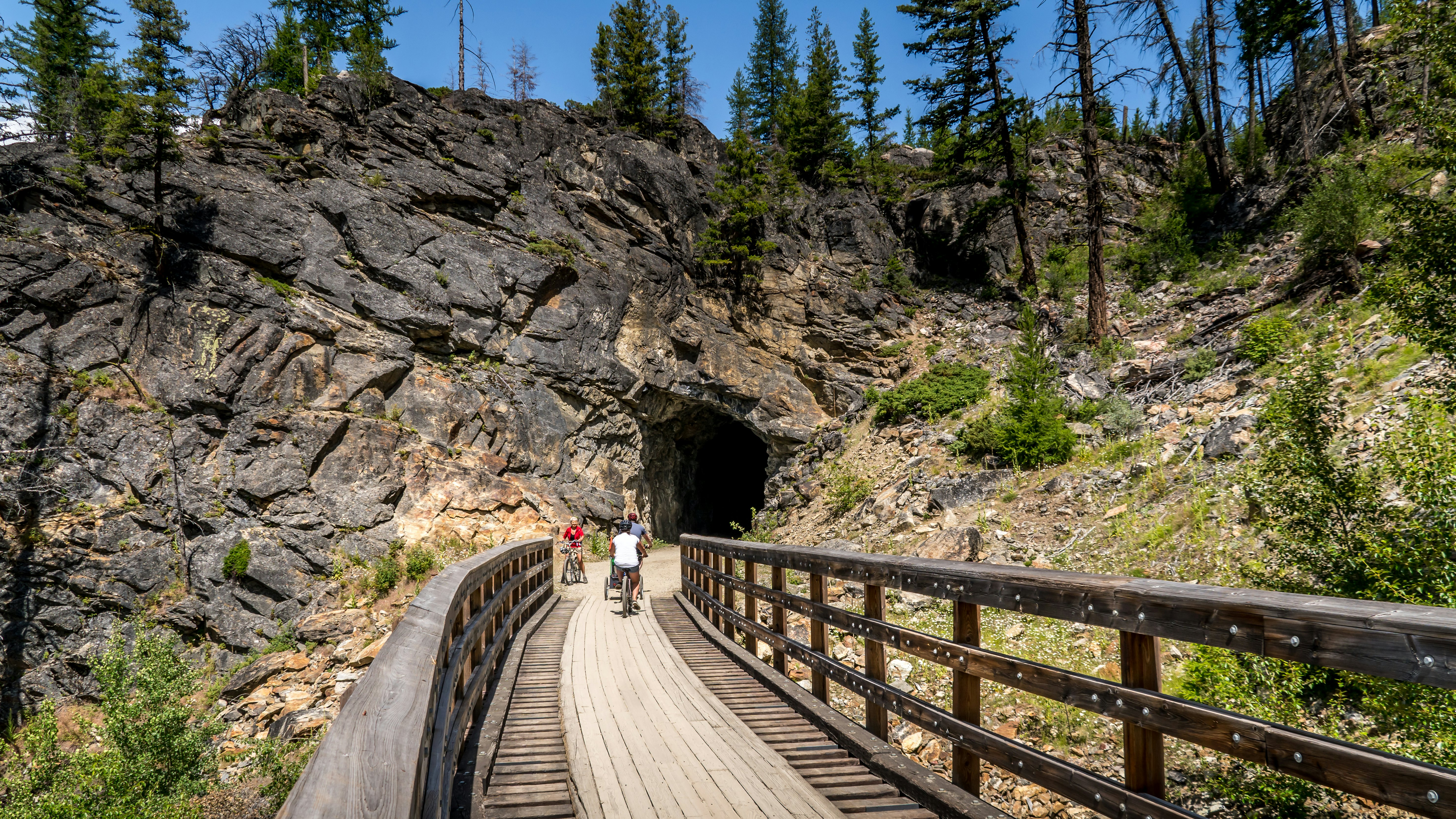
Cycle through southern BC on the Kettle Valley rail trail
This 492km (306-mile) multiuse path, ideal for cycling, weaves through southern BC’s mountains from Hope to Castlegar along the mostly flat bed of a decommissioned railway.
Towns and cities have their own bus systems
Over 50 towns and cities across BC have their own bus networks operated under the umbrella of BC Transit. Prices are reasonable: base fares in Victoria are $3 (US$2.19); day passes $6 (US$4.38).
Metro Vancouver has a separate system of interconnecting buses, sky-trains and sea-buses run by Crown corporation, TransLink. A one-zone fare is $3.35 (US$2.45).
Uber is available
Uber operates across British Columbia. A ride from downtown Vancouver to the airport costs around $30 (US$22).
Public transit is wheelchair-accessible in BC
BC buses have entry ramps that can be lowered to allow wheelchairs on board. They also offer priority seating and space for wheelchairs to be safely strapped in place. Most road crossings in BC have audible signals to aid people with impaired vision.
In Vancouver’s metro area, HandyDART is a door-to-door bus service with driver assistance for people unable to navigate standard public transport. Vancouver’s modern SkyTrain system is well set up for people with physical challenges. All stations have elevators and train access is step-free.
VIA Rail has a detailed accessibility policy that's available online.







